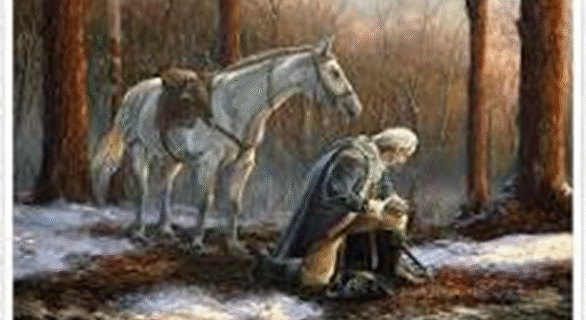 On October 4, 1957, Soviets launched Sputnik
On October 4, 1957, Soviets launched Sputnik
Werner von Braun and my best friend, Jack Smith developed America’s first space satellite, Explorer 1, launched on January 31, 1958. The Space Race was on. (Everyone was clamoring for the U.S. to put up a satellite like the Russians. The government tried its regular aircraft customers and they failed to get one up. Then Werner von Braun and Jack Smith used one of the rockets from McGregor, Texas and got one up in a few days.)
On April 12, 1961, Soviet cosmonaut Yuri Gagarin became the first person in space, completing one orbit of the Earth in 108 minutes, reaching an altitude of 91 miles.
 Less than a month later, May 5, 1961, American Alan Shepard piloted the Mercury Freedom 7 to become the second person in space. His 15 minute flight reached an altitude of 101.2 nautical miles above the earth.
Less than a month later, May 5, 1961, American Alan Shepard piloted the Mercury Freedom 7 to become the second person in space. His 15 minute flight reached an altitude of 101.2 nautical miles above the earth.
 On February 20, 1962, Astronaut John Glenn piloted the Mercury Friendship 7. “Godspeed, John Glenn,” radioed backup-pilot Scott Carpenter from the blockhouse as the rockets fired up. Glenn became the first American to orbit the earth, circling 3 times in just under 5 hours, reaching an altitude of 162 nautical miles.
On February 20, 1962, Astronaut John Glenn piloted the Mercury Friendship 7. “Godspeed, John Glenn,” radioed backup-pilot Scott Carpenter from the blockhouse as the rockets fired up. Glenn became the first American to orbit the earth, circling 3 times in just under 5 hours, reaching an altitude of 162 nautical miles.
 NASA’s first manned spaceflight program was Mercury, 1958-1963. Mercury Astronauts answered questions at a press conference in Washington, D.C., April 9, 1959: Alan Shepard, Malcolm Carpenter, Leroy Cooper, Gus Grissom, Walter Schirra, Donald Slayton, and John Glenn.
NASA’s first manned spaceflight program was Mercury, 1958-1963. Mercury Astronauts answered questions at a press conference in Washington, D.C., April 9, 1959: Alan Shepard, Malcolm Carpenter, Leroy Cooper, Gus Grissom, Walter Schirra, Donald Slayton, and John Glenn.
When questioned about his faith, John Glenn stated: “I don’t think any of us could really go on with something like this if we didn’t have pretty good backing at home, really. My wife’s attitude toward this has been the same as it has been all along through all my flying. If it is what I want to do, she is behind it, and the kids are too, a hundred percent.”
Glenn added: “I am a Presbyterian, a Protestant Presbyterian, and I take my religion very seriously, as a matter of fact.” Glenn told of teaching Sunday school classes, being on church boards, and doing church work with his family: “We are placed here with certain talents and capabilities. It is up to each of us to use those talents and capabilities as best you can. If you do that, I think there is a Power greater than any of us that will place the opportunities in our way, and if we use our talents properly, we will be living the kind of life we should live.”

John Glenn, who had flown 147 combat missions in World War II and the Korean War, addressed Congress in 1962: “I still get a lump in my throat when I see the American flag passing by.”
Later that year, President Kennedy stated at Rice University in Houston, September 12, 1962: “Space is there and we’re going to climb it, and the moon and planets are there and new hopes for knowledge and peace are there. And, therefore, as we set sail we ask God’s blessing on the most hazardous and dangerous and greatest adventure on which man has ever embarked.”
The Mercury Program was followed by the Gemini Program, 1961-1966, which had longer missions and developed techniques of orbital maneuvers, extra-vehicular activity, space rendezvous, docking and reentry. This put America ahead in the Space Race. Werner von Braun, father of modern space flight, developed the powerful Saturn V rocket capable of sending a spacecraft beyond Earth’s orbit in NASA’s Apollo Program.
 An “astronaut” is defined as someone who has ascended over 62 miles (100km) above the Earth’s surface. As of 2021, over 570 individuals are in that group. Only 24 individuals have left Earth’s orbit, and only 12 have walked on the Moon.
An “astronaut” is defined as someone who has ascended over 62 miles (100km) above the Earth’s surface. As of 2021, over 570 individuals are in that group. Only 24 individuals have left Earth’s orbit, and only 12 have walked on the Moon.
The first mission to leave Earth’s orbit and fly around the moon was Apollo 8 in 1968. The tiniest mistake would have sent them crashing into the moon’s surface or plummeting off into endless space. As they successfully went into lunar orbit, astronaut William Anders snapped the famous Earthrise photo that was printed in LIFE Magazine.
 Apollo 8’s three man crew looked down on the earth from 250,000 miles away on Christmas Eve, 1968.
Apollo 8’s three man crew looked down on the earth from 250,000 miles away on Christmas Eve, 1968.
 Commander Frank Borman radioed back a message, quoting from the Book of Genesis: “We are now approaching lunar sunrise. And for all the people back on Earth, the crew of Apollo 8 has a message that we would like to send to you:
Commander Frank Borman radioed back a message, quoting from the Book of Genesis: “We are now approaching lunar sunrise. And for all the people back on Earth, the crew of Apollo 8 has a message that we would like to send to you:
“In the beginning God created the heaven and the earth. And the earth was without form, and void; and darkness was upon the face of the deep. And the Spirit of God moved upon the face of the waters. And God said, Let there be light: and there was light. And God saw the light, that it was good: and God divided the light from the darkness. And God called the light Day, and the darkness he called Night. And the evening and the morning were the first day.
“And God said, Let there be a firmament in the midst of the waters, and let it divide the waters from the waters. And God made the firmament, and divided the waters which were under the firmament from the waters which were above the firmament: and it was so. And God called the firmament Heaven. And the evening and the morning were the second day.
Commander Borman continued: “And God said, Let the waters under the heaven be gathered together unto one place, and let the dry land appear: and it was so. And God called the dry land Earth; and the gathering together of the waters called he Seas: and God saw that it was good.”
Frank Borman ended by saying: “And from the crew of Apollo 8, we close with good night, good luck, a Merry Christmas, and God bless all of you – all of you on the good Earth.”
After returning to earth, a reporter told Borman that a Soviet cosmonaut returned from space and said he did not see God. Borman replied: “I did not see Him either, but I saw His evidence.” Later Frank Borman described his voyage: “I had an enormous feeling that there had to be a power greater than any of us – that there was a God, that there was indeed a beginning.”
The first mission to walk on the moon was Apollo 11, which blasted off JULY 16, 1969, from Cape Kennedy.
 President Richard Nixon stated in Proclamation 3919: “Apollo 11 is on its way to the moon. It carries three brave astronauts; it also carries the hopes and prayers of hundreds of millions of people. That moment when man first sets foot on a body other than earth will stand through the centuries as one supreme in human experience. I call upon all of our people to join in prayer for the successful conclusion of Apollo 11’s mission.”
President Richard Nixon stated in Proclamation 3919: “Apollo 11 is on its way to the moon. It carries three brave astronauts; it also carries the hopes and prayers of hundreds of millions of people. That moment when man first sets foot on a body other than earth will stand through the centuries as one supreme in human experience. I call upon all of our people to join in prayer for the successful conclusion of Apollo 11’s mission.”

On July 20, 1969, Astronauts Neil Armstrong and Buzz Aldrin, landed their lunar module, the Eagle. Buzz Aldrin read John 15:5 and partook of communion before exiting the lunar module. They spent a total of 21 hours and 37 minutes on the moon’s surface before redocking with the command ship Columbia.
 President Richard Nixon spoke to the astronauts on the moon, July 20, 1969: “This certainly has to be the most historic telephone call ever made from the White House. The heavens have become a part of man’s world. For one priceless moment in the whole history of man all the people on this earth are truly one, one in our prayers that you will return safely to earth.”
President Richard Nixon spoke to the astronauts on the moon, July 20, 1969: “This certainly has to be the most historic telephone call ever made from the White House. The heavens have become a part of man’s world. For one priceless moment in the whole history of man all the people on this earth are truly one, one in our prayers that you will return safely to earth.”
President Nixon greeted the astronauts on the USS Hornet, July 24, 1969: “The millions who are seeing us on television now feel as I do, that our prayers have been answered. I think it would be very appropriate if Chaplain Piirto, the Chaplain of this ship, were to offer a prayer of thanksgiving.”
 Addressing a joint session of Congress, September 16, 1969, Commander Neil Armstrong stated: “To those of you who have advocated looking high we owe our sincere gratitude, for you have granted us the opportunity to see some of the grandest views of the Creator.”
Addressing a joint session of Congress, September 16, 1969, Commander Neil Armstrong stated: “To those of you who have advocated looking high we owe our sincere gratitude, for you have granted us the opportunity to see some of the grandest views of the Creator.”
Apollo 12 Astronauts Charles “Pete” Conrad and Alan Bean walked on the moon for 31 hours.
 Alan Bean later became an artist. One of his painting is of an astronaut kneeling in prayer on the moon, titled “We Came in Peace for All Mankind.”
Alan Bean later became an artist. One of his painting is of an astronaut kneeling in prayer on the moon, titled “We Came in Peace for All Mankind.”
 On the Apollo 14 mission, February 6, 1971, Astronauts Edgar Mitchell and Alan Shepard left a tiny microfilm copy of the King James Bible aboard the lunar module Antares on the moon’s Fra Mauro highlands.
On the Apollo 14 mission, February 6, 1971, Astronauts Edgar Mitchell and Alan Shepard left a tiny microfilm copy of the King James Bible aboard the lunar module Antares on the moon’s Fra Mauro highlands.
On Apollo 15’s mission, 1971, Astronaut James Irwin became the 8th person to walk on the moon. He spoke of leaving earth: “As we got farther and farther away it diminished in size. Finally it shrank to the size of a marble, the most beautiful marble you can imagine. That beautiful, warm, living object looked so fragile, so delicate, that if you touched it with a finger it would crumble and fall apart. Seeing this has to change a man, has to make a man appreciate the creation of God and the love of God.”
Jim Irwin and Dave Scott were mentioned in astronaut Alan Bean’s book: “Jim Irwin was one of my favorite astronauts. Jim was, unexpectedly, more religious than most of us realized. I can remember when he and Dave were riding along on their rover near the end of their third EVA and Dave said, ‘Oh, look at the mountains today, Jim. When they’re all sunlit isn’t that beautiful?’ Jim answered, ‘Really is, Dave. I’m reminded of a favorite Biblical passage from Psalms, ‘I look unto the hills from whence cometh my help.'”
Bean continued: ‘Jim would later say, ‘I was aware on the Moon that thousands of people on Earth were praying for the success of our mission. The hours I spent on the Moon were the most thrilling of my life. Not because I was there but because I could feel the presence of God. There were times I was filled with new challenges and help from God was immediate.'”
Alan Bean concluded: “Dave and Jim journeyed into space as test pilot astronauts and most of us returned the same way. But Jim changed outwardly. As he explained, ‘I returned determined to share with others that profound experience with God on the Moon and lift man into his highest flight of life.’”
 Later, Astronaut James Irwin became an evangelical minister. Of his experience of walking on the moon, he stated: “I felt the power of God as I’d never felt it before. Being on the moon had a profound spiritual impact upon my life. Before I entered space with the Apollo 15 mission in July of 1971, I was a silent Christian, but I feel the Lord sent me to the moon so I could return to the earth and share His Son, Jesus Christ.”
Later, Astronaut James Irwin became an evangelical minister. Of his experience of walking on the moon, he stated: “I felt the power of God as I’d never felt it before. Being on the moon had a profound spiritual impact upon my life. Before I entered space with the Apollo 15 mission in July of 1971, I was a silent Christian, but I feel the Lord sent me to the moon so I could return to the earth and share His Son, Jesus Christ.”
He added: “Jesus walking on the earth is more important than man walking on the moon.”
Apollo 16 Astronaut Charles Duke wrote (Charles Duke: Moonwalker, Rose Petal Press, 2nd edition, 2011, p. 256-261): “I used to say I could live ten thousand years and never have an experience as thrilling as walking on the moon. But the excitement and satisfaction of that walk doesn’t begin to compare with my walk with Jesus, a walk that lasts forever.”





